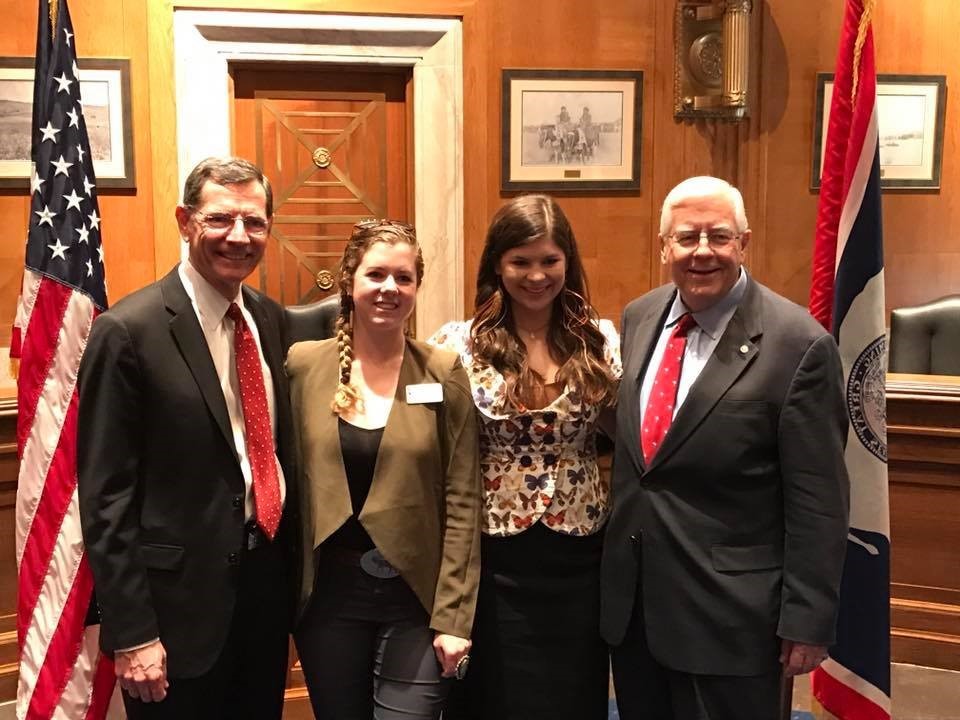Fly-in season is a busy time on Capitol Hill as folks migrate to D.C. to make a case for policies that strengthen our hunting and fishing heritage
For those who work on Capitol Hill, it’s a familiar sight: Streaming down the steps of a congressional office building, carrying identical totes, a crowd of out-of-towners wait in line to go through security. They’re holding matching folders and chatting excitedly about talking points and appointments. It’s a sure sign that someone in this town has organized a fly-in.
A fly-in is an event where constituents are invited to Washington to lobby lawmakers in a coordinated effort, meeting representatives and staffers face-to-face and sharing their perspectives. Non-profit and advocacy organizations often help participants with scheduling meetings, facilitating training and events, and constructing a unified and effective message for the group.
While advocacy tools like petitions or action alerts can leave some disconnect between a constituent and their representative, fly-ins are about as humanizing as you can get—and sometimes what everyone needs is a face-to-face conversation that leaves both parties more informed.
Advocates Flocking Together
If you’re an elected official, you’ve got a pretty good incentive to listen to the people who vote in your district. Constituents may not have the same data, nor training, as professional lobbyists, but they have something uniquely impactful: authority gained through on-the-ground life experiences at home.
At the Land Trust Alliance’s recent fly-in, staff briefed participants on key issues and outlined specific asks for lawmakers, like strengthening farm bill conservation programs. Bryan David, LTA’s advocacy & outreach manager, says the voices of their 120 Capitol Hill initiates deliver “a more effective and local message than ‘D.C. insiders’ could provide.”
But that’s not all that makes fly-ins unique or effective. After all, anyone can visit his or her congressional office, even if you’re just in D.C. on vacation.
In 2015, after a spring public lands fly-in hosted by the TRCP and our partners, Dan Harrison made the point that the players working to transfer or sell public lands have an advantage over the sportsmen’s community: They’re laser pointed at the U.S. Capitol while sportsmen and women are spread thin across the nation, keeping an eye on both federal and local issues affecting habitats on public and private land.
By bringing dispersed hunter and angler voices together in D.C., fly-ins facilitate the delivery of a cohesive message, usually including a very specific ask like a particular budget line-item or a policy priority, directly from the mouths of passionate constituents.

Timing is Everything
Since work (and life) in D.C. follow the congressional calendar, fly-ins tend to happen in bursts—often referred to as “fly-in season.” A reflection of Congress’ expected appropriations and budget timelines, spring is an especially strategic time to gather the troops and demand stronger programs that benefit access and fish and wildlife habitat.
Right now, lawmakers are crafting bills that allocate money to programs and departments within the federal government. It’s a good time to get in on the ground floor and ensure that our priorities are being considered at the right time.
Last month, National Wildlife Federation gathered representatives from 13 affiliates and outside groups to urge lawmakers to keep public lands public and improve funding for public-land management. They sat down with the people who are at the spearhead of shaping federal policy and discussed their on-the-ground concerns relating to sage-grouse management, wildfire funding, and more.
Just after that, the Outdoor Industry Association hosted 130 executives from their member companies to advocate for public lands and their role in the $887-billion outdoor recreation economy. They had specific asks for the lawmakers, like joining an outdoor recreation caucus and securing funding for the Land and Water Conservation Fund, and worked in unison to drive the point home.
These weren’t the only spring fly-ins in our community this year. Many of our partners have been busy bringing folks into congressional offices to make the case for habitat and public lands—and if all goes according to plan, fiscal year 2018’s federal appropriations bills coming out of the U.S. House and Senate, as well as other legislation this year, will reflect what sportsmen and women care about most.
There’s More Than One Way to Take Action
Fly-ins are only one component of comprehensive and effective conservation advocacy. It takes countless people and a wide variety of efforts coming together to build a strong case for hunting and fishing. For example, when lobbyists—professional or otherwise—go to the Hill, they might tell lawmakers that more than 53,000 people are proud of their public lands, citing the Sportsmen’s Access petition. It’s a big number to throw out, but it’s important to remember that each of those names is an individual who took the time to learn more and take action. When lawmakers see some of those faces in their offices, it gives life to all 53,000.
Advocacy on Capitol Hill isn’t just about what policy staff and government relations professionals do, although their work is immeasurably valuable (seriously, they’re rock stars.) It’s also about how each person who becomes an advocate, whether they come to the Capitol or sign a petition from home, holds within them a lifetime of meaningful experiences—and their stories make a big difference for the future of habitat and access.




